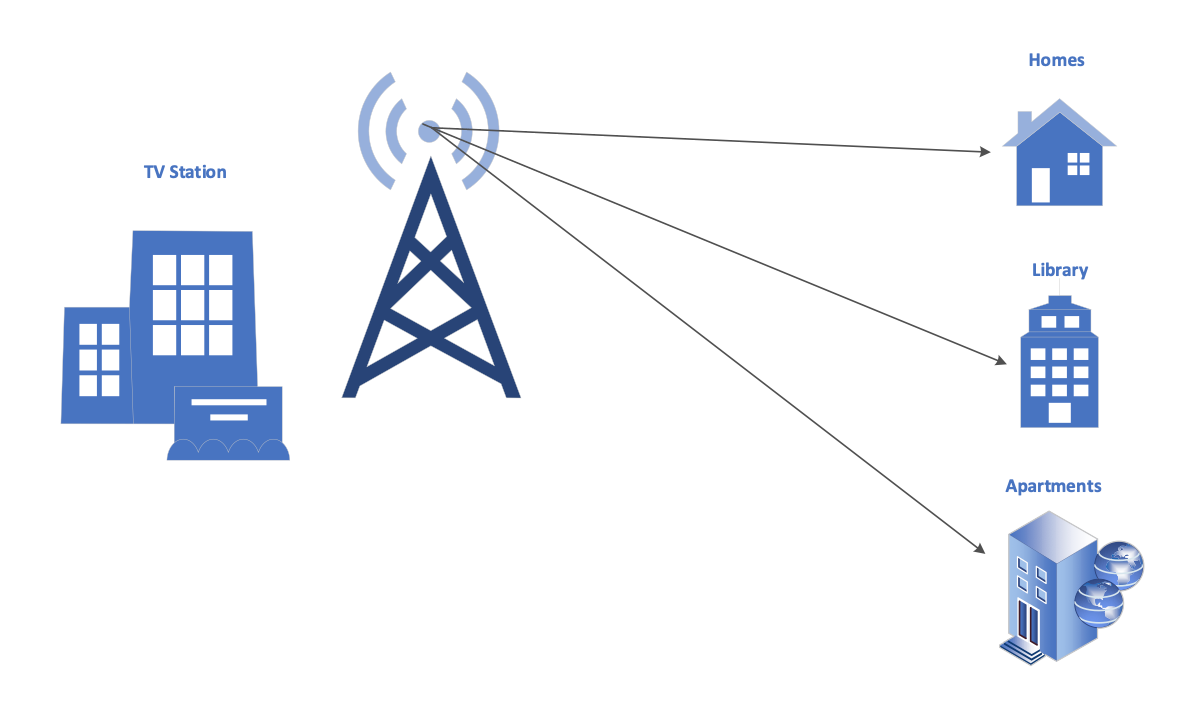Given that over-the-air broadcasting continues to be the most efficient way for delivering a piece of content to many receivers (Figure 1), a potential “killer app” for broadcasters is datacasting. There are many types of services that are well-suited for datacasting, such as near video-on-demand (NVOD), targeted advertising, software download or update services. For the purpose of this blog post, let’s focus on using datacasting for remote learning.

Figure 1
Datacasting can be thought of as sending data over-the-air using terrestrial transmission or, simply put, broadcasting data. While broadcasters have been broadcasting real-time audio and video for a very long time, the capability to deliver file-based content, including interactive applications, images and documents efficiently over-the-air is achieved through non-real-time (NRT) transmission. NRT is a core capability in both ATSC 1 and ATSC 3.0, but ATSC 3.0 is ultimately better suited for delivering larger NRT payloads due to its higher capacity.
It is a critical requirement of remote learning for all students to have access to their course materials upon the start of a class. This means students cannot be trying to reach a school server when class is about to start. More importantly, there is also the issue that not everyone has high-speed internet access, so downloading class materials might take a long time if they are even accessible at all. This scenario is well suited for datacasting, whereby class materials would be delivered to the home ahead of time via an NRT service that is scheduled for delivery prior to the start of the class so all materials would already be in the home.
Another example is using datacasting for delivering educational materials to Wi-Fi hotspots. For rural communities with limited or no broadband connectivity, it makes sense to strategically install Wi-Fi hotpots to make it more convenient for the local community, such as at local grocery stores, libraries and shopping centers. With an ATSC antenna and a Next Generation TV receiver with access to storage, broadcasters could deliver school materials to these locations to better serve the community.
Datacasting is a powerful tool that broadcasters will have in their arsenal with Next Gen TV. However, since terrestrial broadcast is a one-way system, content will need to be received and stored either locally in the home or on local community servers. As such, for datacasting to be a viable solution for supporting remote learning, Next Gen TV receivers will have to be aggressively deployed in the early days until every home has a Next Gen TV receiver.
The COVID-19 pandemic has made remote learning a necessity, and virtually every school system now has a remote-learning program. My expectation is that remote learning is here to stay, and it creates yet another opportunity for broadcasters to do what they have always done—serve their local communities.

